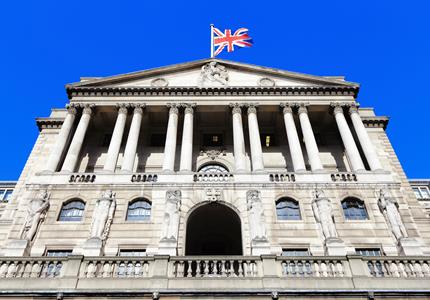

Weekly update - Peeking over the horizon
This week's update comes from Jon Pope who is in our cash management team
There have been a couple of articles recently which have focussed on an unfashionable economic theory. Whilst it is probably unfashionable for a good reason, things have a habit of returning to vogue (as an example did you know vinyl records outsold CDs for the first time since the 80s in the first half of 2020) and so we thought it worth mentioning this week.
The Quantity Theory of Money (QTM) states that the general price level of goods and services is directly proportional to the amount of money in circulation. So an increase in the supply of money leads to a proportional change in price levels; or to put it another way is inflationary.
Central Banks at the moment are effectively printing money so that they can buy bonds to fund government spending and most forecasters are expecting the various schemes to be extended further over the next year. At the same time, the household savings ratio has increased significantly given the restricted opportunity most have to spend money, potentially creating another source of supply.
These articles are therefore making the point that, assuming a vaccine is found and life begins to return to normal next year, once restrictions are lifted a combination of pent up demand from consumers and available cash to spend could generate a spending splurge. If one subscribes to QTM then this in turn would lead to a spike in inflation.
Of course Central Banks would welcome the return of inflation to inflate away the high levels of global debt. Most have a target of 2.00% and inflation is well below that level in most developed countries. So a burst of inflation would be seen as a good thing, even if it rose above the 2.00% target. But Central Banks would have an upper tolerance for inflation and so, if the inflationary argument is followed to a reasonable conclusion, then expecting official interest rates to remain unchanged for five years or more becomes unlikely.
There are good reasons why QTM is currently discounted by most. Central Banks have been printing money to buy bonds for almost 10 years and most of this money has never made it out of the banking system into the real economy. The other main issue is that a key factor in the QTM equation is the ‘velocity of circulation’ – how often each unit of currency is used to buy goods and services.
The problem here is that, to quote Kevin Boscher Ravenscroft’s chief investment officer, ‘Velocity has been stuck at zero for years because banks are less willing to lend and customers less willing to borrow’. So the problem is that without a better transmission mechanism between Central Banks printing money and the wider economy, and a significant improvement in consumer confidence to generate the desire to spend, then the conditions to stimulate the money supply side of QTM don’t exist.
However, the latest round of stimulus has moved beyond Central Banks just buying bonds – governments are paying wages and several jurisdictions have paid people directly. At the same time maybe the craving to revert back to a normal lifestyle will be the over-riding driver and so spending will be fuelled by a desire to ‘seize the day’.
Perhaps then, rather like the number of ‘Gen X’ currently buying U2 vinyl re-issues, QTM will once again start to occupy the minds of Central Bankers in 2022.
Here’s hoping because it would be a sign that better times have arrived and possibly that monetarists had found what they were looking for!


